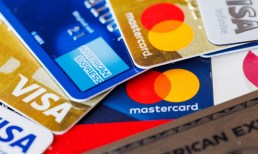The Bank of Mom & Dad (BOMD) isn’t just a sitcom line. One analysis found that parents lent their kids a collective $47 billion in 2019, mostly in the form of down payments on first homes.
What if those first-time homebuyers had become financial ninjas at 15? They might not have needed that humbling BOMD loan. They could be part of a financial groundswell that makes today’s teens unlike any generation of adolescents before. It’s the teening of digital banking.
As Copper Banking co-founder and CEO Eddie Behringer told PYMNTS’ Karen Webster, today’s up-and-comers include Gen Z, born between 1997 and 2012, and teenagers being called “Generation Alpha” by some, born around 2010 in the wake of the housing crash.
With a nod to record student loan and credit card debt, Behringer said “this is really the first generation that has been hyper attuned to the missteps of past generations as it comes to those things.” Unlike past youngsters, today’s teens think “It’s cool to be smart about money.”
Long known as an awkward age, 15 is now a magic number. He told Webster, “you would think that like 10 to 19 [years old] is a narrow enough segment. What we found is that every 15-year-old in America is looking for a product. They’re looking for their first primary bank account.”
Saying this personal banking inflection point is now happening two to three years earlier than ever before, Copper is built on the idea that 15 is the ideal age to learn financial literacy — with parental supervision and a serious immersion in financial literacy.
Advertisement: Scroll to Continue
“We want teens to make mistakes in a safe space,” he said. “When you’re on a debit product before you go to college and have the potential to get your first big credit limit and fall into that vicious cycle, we want you to make those mistakes early,” before harming incipient scores.
But the demand is undeniable. Behringer pointed to “a hyper attention within the fin-talk influencers, really the social media that drives this attention towards personal finance. I think this is a moment in history where you have this massive consumer shift that has many tailwinds from the pandemic.”
“You do have way more optionality than we ever have. It’s just this massive attention that being smart about your money is cool. It truly is for this [teen] generation.”
See also: Gen Z Consumers Love Their Debit Cards…For Now
Fighting Financial Illiteracy
With roughly 800,000 account holders and flush with $29 million in Series A funding, Copper is going back to school with its message and platform, yes literally.
The Credit Card Accountability Responsibility and Disclosure Act of 2009 disallowed lenders from marketing card products on college campuses, so Cooper is bringing its financial literacy efforts right into high schools, partnering with parents and schools the whole way.
In his previous startup Snap! Raise, a fundraising tool for schools, Behringer and his cofounder saw home economics still being taught, but not basic personal finance in the age of apps.
He said, “That just got us realizing how low the bar has been set for pre-18 banking. The invisible learning approach is the biggest gap as far as driving outcomes. You simply can’t have a website that talks about financial literacy or inclusion that drives zero engagement and think that’s the solution.”
He recalled a fateful meeting with a JP Morgan executive who called financial literacy “the last true white space that exists” in finance. “That was transformative for us early on, thinking about this truly as the last unbanked generation that exists. They’re not banking anywhere.”
But they are interacting with the financial system — and even borrowing.
“There’s definitely a difference between good and bad credit, and credit’s not a bad thing,” he said. “The popularity of buy now pay later, especially with the younger generation, is just all the data and proof point that you need there.”
Noting trends like meme stocks and casino capitalism, he said “the cool part about this is that teens are trying to take control of their financial future. They’re trying to get access to a bank account. They’re trying to get access at an age much earlier than they ever have historically.”
See also: Copper Banking Raises $9M in Seed Funding
High School Sweethearts
Joking that if he had pitched this app to his own mom at 15 he would’ve gotten a slap because historically parents controlled all household finance, Behringer said times have changed.
He told Webster that the shift is happening because “Gen Z is very powerful in decision making in the household, whether it’s what mom buys at the grocery store or what technology’s consumed. What we’ve seen is that they can actually help introduce a financial product, which has never been the case. That is a big part of what’s driven a lot of our growth.”
After high school, does one “graduate” from Copper to an app for grownups? That’s not the plan, as he said “There’s tremendous amount of market for us to go and get. That said, you keep your first primary bank account for 14 years.”
“We believe we can be that primary provider for you really through the years that you leave home and go to college. That is a focus of ours. We are seeing all those primary hallmarks that this is your first primary banking relationship. That’s kind of how we’re thinking about it today.”
Are big banks worried that this interloper has cracked the code on the next generation of account and card holders? For one thing, as a neobank Copper has no physical branches to service. Also, “You’re also seeing a shift in of how teens think about credit,” he said.
“The vast majority of our teens aren’t excited about getting a credit card.”
That would mark a vast shift from past generations, but not entirely surprising given the financial extinction-level events the U.S. has endured since 9/11. Perceptions around what banks are, what they do and whom they serve are up for grabs.
It’s starting to look like the next wave of consumer banking may be more financially adroit than any generation before, and that’s going to reverberate throughout finance for years to come.
“If at a high level you use the neobank focus and concept, 100% of teens on Copper, their parents may bank at Big 5 institutions, but made the decision to open their teen’s first primary account with us,” Behringer said.
Saying that banking for the legal drinking age crowd is commoditized to the hilt, he added, “that was part of our strategy is how do we have this be that first relationship and hope to see that that stickiness we’ve historically seen there as well” but with a neobank they joined as teens.



